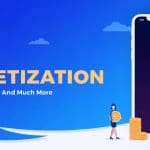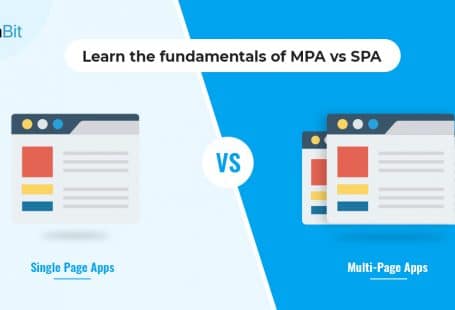If you want to build a scalable product, then you need to ask this question: “Can my product maintain stability if it experiences tremendous growth?”.
In other words, will a surge in the number of users strain the functionality of your product? If it does, then your product is not scalable.
Startups who don’t think through their development model, end up aggressively marketing their product and getting millions of users, without developing a product that can handle so much engagement.
So what’s the outcome? The product simply crashes after the launch.
Being in the role of technology partners all these years, we know that scalability is engineered. You have to chalk out a roadmap for startups that are planning to build a scalable, market-ready tech product.
You can take examples of some of the biggest brands, who were able to grow quickly because they designed their products for scalability. They created a business model that was stable under pressure and took advantage of the network effect.
The following are the pointers to keep in mind when aiming for a scalable product.
Validate your idea quickly to build a scalable product
90% of startups fail. There is a simple reason behind this stat.
They ideate products that the market doesn’t really want. Most of them don’t take the much-needed step to validate their product idea.
So before you go all guns blazing, see to it whether your idea will turn into a market-ready product or not. You can collaborate with a technology partner, to make it easier for you.
A good technology partner will help you in being realistic about your product, by letting you figure out the traction that your product can get. It will help you understand the requirements of a “tech product” so that you don’t initiate an ambitious but irrelevant project.
The smart way is to build an MVP instead of a full-fledged product. You can get the team up with a technology partner and know everything about it.
Aim for the maximum product benefit
Every startup has a crucial decision to make before starting out the product journey. Whether they should hire an in-house team or they should outsource the entire development. We have written an in-depth article on this. Do give it a read.
Before making that decision, you must conceive a few hypothetical scenarios, and measure the scalability accordingly.
For example, just think about a scenario where you are a team of three, but you need at least a team of 5 to handle product development. So all that you need to is, compare the cost of hiring the extra resources with the cost of outsourcing the entire development process.
You can think of another scenario, where you have a team of 5, but you don’t have the required infrastructure. In this case, you can compare the cost of having a fully-functional infrastructure with the cost of outsourcing the entire development process.
You shouldn’t end this practice of conceiving hypothetical scenarios even after you have made your decision. Suppose you go ahead with outsourcing product development. Here also, you can think of a few scenarios.
For example, initially you are building your product for iOS platform, but later you want it to be compatible with android too. Now you can ask yourself whether your outsourcing partner has to build android applications in the past, or are they agile enough to handle a shift in technology or product strategy?
Visualization is the key while building a scalable product
To scale your product, you need to have well-defined project goals and product requirements.
What’s the minimum number of users that you are expecting?
You must be clear about the magnitude of your business, and you must make sure that your developers understand that as well so that they can visualize the product better.
You can provide them with information like:
- The buyer-persona of your users
- The number of expected users for this product
- Whether your product will revolve around one feature or it will have a number of features.
- The life expectancy of your product
Sell your product before you build it
The moment you ideate about a product, you can actually start selling it, which most people don’t get. They wait until their full-functional product hits the market.
What is the best way to validate your idea?
It is to out and starts selling it, the idea itself. Well, you may ask, “Who will buy a lesser or an incomplete version of a product?”.
But this is where agile methodologies can help you out.
If you incorporate agile methodologies in your product development, then you will always have a version of a product that will be market-ready.
Your full-fledged product might be having a number of features, but with agile methodologies in place, the development team prioritizes the core features of the product and builds them first. In other words, the basic version of your product can be developed in quick time. You can test it in the actual market scenario and get valuable customer feedback.
This way you can scale your product organically, without getting too adventurous with your product.
For example, you got an idea to build an app that will arrange treks for IT people, so that they can get out of their ecosystem and connect with nature.
For starters, you can reach out to your friends, maybe 10 of them, and get their feedback. You can even arrange a short trek to give them hands-on experience so that they can give you practical suggestions.
So if we summarize the benefits of pushing your product to the market from the very beginning, then the following points come up:
Quick validation
This point is very much highlighted above, that how quickly you can validate your idea if you follow agile development methods.
Customer feedback
You might not derive too much of a monetary benefit with the basic version of your product, but the feedback that you will get, it will be priceless.
Product Iterations
You might have a wrong idea about the core features of your product. Agile development gives you much more space for iterations so that you create the right USP for your product.
Deriving engagement
To assume that there will be a heavy influx of users only when your product is fully-functional is a fallacy. With a basic version of your product ready, you can do the A/B testing. You can create a landing page and sign up users so that they can get notified once the complete product is launched.
We hope you liked this write-up. Whatever we have shared is entirely based on our experiences as a technology partner, a role in which we have grown immensely over the years. Do share your views on the subject in the comment section.








